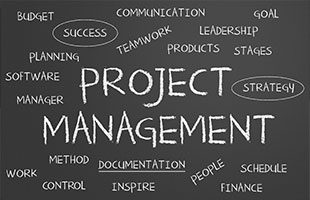5 signs your team lack project management fundamentals
You probably have a team of highly skilled specialists, with years, if not decades of experience of ‘real world’ project experience. So why is it that so much experience counts for so little when managing projects?
It would seem logical if you team have worked on similar projects, to the ones they are currently tasked with that they would be well prepared to manage the scope, budget, timeline and performance expectations …but you would be wrong. Your assumption is that projects that start out with similar scopes end up the same way. They never do. Each project is unique and your project management disciplines should reflect this reality.
This fact alone would seems to imply that it is almost impossible to accurately estimate the time, resources and performance criteria of a project at the time of commencement. That belief in itself demonstrates a lack of understanding of project management fundamentals. Here are 5 other signs that team may lack the practical fundamentals of project management.
Sign #1 ‘Our estimate of resources required to finish the project was naive’
Does this sound familiar? The estimated resources required to finish a project on time and to the performance criteria in the original scopes are now a distant memory. The only way to get the project back on track is to move the timeline further our and throw even more resources at it. Your original launch date is not even your biggest problem, it’s finding the extra funds and resources to get the project finished that is now your biggest headache.
You all thought your initial estimates were accurate but you now understand how optimistic you may have all been. Is it just a case of allowing a much greater resources allocation next time? The simple answer is ‘no.’ You and your team need the project management fundamentals to need the tools that allow you to much more accurately assess the resources you need to manage a project, from inception to completion.
Sign #2 ‘We’ve missed our critical deadline and we’re now having to deal with the knock on effects’
A lack of project management disciplines are usually at the root cause of critical deadlines goes out the window. As they say, “No Battle Plan Survives Contact With the Enemy.” The real world implications of under estimating the scope of a project and the resources needed to complete it eventually lead to continuous shifting of deadlines for completion. This would be comical if it was happening to your competitors, but it’s not, it’s happening to you.
And worse of all, this is having deeper, more costly ramifications throughout your organization. If your team had proper project management fundamentals training, you would be in a much better position to meet critical deadlines.
Sign #3 ‘Our lofty performance expectations were the first casualty’
Quality should never be sacrificed on a project. Not only is it demoralizing to the project management team, it leaves all stakeholders with a bitter taste in their mouths and no appetite for any future projects your team undertakes.
Like ripples in a pond, a project that does not meet performance criteria has far-reaching and long-term impacts. Everybody becomes less enthusiastic and risk averse.
You start looking for the safe options and that only produces increasingly diminishing returns. Training your team on project management fundamentals may have delivered a very different outcome.
Sign #4 ‘Our dependence on 3rd parties have left us high and dry’
How could you have possible known that a 3rd party contractor would let you down so badly? Believe it or not, you should have known this from the outset that this was a factor you needed to allow for. More so, you should have had a way of monitoring that this problem was emerging and been in a position to implement your contingency plan, and as they say in the Western movies, ‘head it off at the pass.’
Identifying the risks that are critical to meeting milestones, budgets and performance expectations is possible if you use the right methodology and tools. No mater the size and complexity of a project, it can be relatively easy to estimate, monitor and control risk, if you have the right training.
Sign #5 ‘Our original project scope was too thin’
Most projects start too early, because organizations believe this is the best way of ensuring deadlines are met. In reality, this is often the reason why critical deadlines are not met.
Learn the lessons of Burke and Wills. Headlining off on a long journey, on a road not travelled, with an incomplete map, minimal resources and no real understanding of the poetical risks you may face alone the way will (more often than not) lead to a catastrophic failure.
Allocating more time and resources to developing a scope for your projects will have a dramatic impact on your success. What’s more, if the scope changes along the way (and it probably will), you will be in a better position to deal with the potential knock on effects.
Assumptions are the enemy to success
You assume that you and your team have strong project management fundamentals, because they have completed projects of a similar scope in the past. You also assume they have learned from previous mistakes, but have your provided them with the fundamental disciplines and training to make sure mistakes are not repeated, or new mistakes made?
Einstein once said, “Insanity is doing the same thing over and over again and expecting different results.” How often have you or your people made the same mistakes on project after project. For many organizations, a fundamental lack of understanding of the skills required to properly manage projects is their biggest barrier to success and growth. Your organization may fit into this category. If any of the above ‘5 signs your team lack project management fundamentals’ reflect your experience, then your organization needs practical project management training.
DST people provide ½ day, intensive project management training, designed to provide your team with the basic skills they need. The fundamentals learned in this training can apply to almost any type or size of project, in any sector and to any skill level. If your team is like the countless large and small organizations who have undergone this training, they will come away equipped with the basic skills and tools that will have an immediate impact on the success of both projects in progress and future projects.
Contact Us








